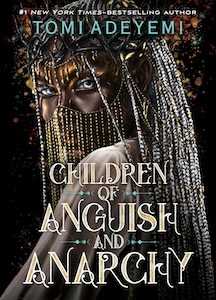“The Map of Salt and Stars” by Zeyn Joukhadar
It is the summer of 2011, and Nour has just lost her father to cancer. Her mother, a cartographer who creates unusual, hand-painted maps, decides to move Nour and her sisters from New York City back to Syria to be closer to their family. But the country Nour’s mother once knew is changing, and it isn’t long before protests and shelling threaten their quiet Homs neighborhood. When a shell destroys Nour’s house and almost takes her life, she and her family are forced to choose: stay and risk more violence or flee as refugees across seven countries of the Middle East and North Africa in search of safety. As their journey becomes more and more challenging, Nour’s idea of home becomes a dream she struggles to remember and a hope she cannot live without.
More than eight hundred years earlier, Rawiya, sixteen and a widow’s daughter, knows she must do something to help her impoverished mother. Restless and longing to see the world, she leaves home to seek her fortune. Disguising herself as a boy named Rami, she becomes an apprentice to al-Idrisi, who has been commissioned by King Roger II of Sicily to create a map of the world. In his employ, Rawiya embarks on an epic journey across the Middle East and the north of Africa where she encounters ferocious mythical beasts, epic battles, and real historical figures.
Review
This was such a great book. Zeyn Joukhadar has such a lyrical way with words that fill his stories with a lot of details and descriptions that make for a fun read. I went in expecting alternating chapters but I should have realized that since Nour starts out telling the story of Rawiya it made more sense that each chapter after the first couple would start with a second from Rawiya and then continue on with Nour’s travels. I really enjoyed reading about all of the characters as they made their way across the lands. A lot of things happen along the way and I don’t want to spoil anything but I was happy with how everything ends up for both Nour and Rawiya. Be sure to read the notes chapter at the end for some interesting details as well.
Warnings and additional reviews are available on the StoryGraph page for “The Map of Salt and Stars”.
Book Details

- Author’s Website
- Zeyn Joukhadar
- Publisher / Date
- Atria Books, May 2018
- Genre
- General Fiction
- Page Count
- 368
- Completion Date
- July 11, 2024




